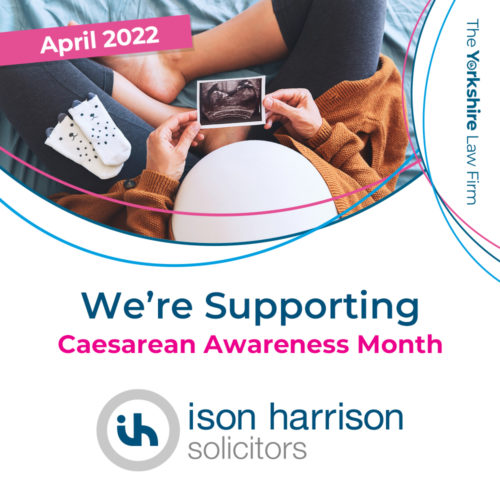This month is the return of the annual Caesarean Awareness Month – a dedicated engagement program to educate and raise awareness on the childbirth issue which continues to be embroiled in discussion, complexity and controversy.
It is believed that one in four women who give birth in the UK have a C-section. However, most of these are emergency C-sections when a vaginal delivery is not possible or safe. With this in mind it is important that expectant mothers know the facts to enable them to make an informed decision even in an emergency situation.
What is a Caesarean section?
A caesarean section also known as a C-section is an operation to deliver your baby through an incision made across your tummy and womb, just below your bikini line. However, in emergency situations the incision may be vertical.
You may have a planned (elective) C-section which is decided upon before you go into labour or you may have an emergency C-section if this is the safest way to deliver your baby.
A C-section is a major operation that carries a number of risks, so it is usually only done if it’s the safest option for you and your baby.
Making an informed decision
It is important to be aware of the possible complications of having a C-section and these include;
- Infection of the wound or womb lining
- Blood clots
- Excessive bleeding
- Damage to nearby areas, such as the bladder or the ureter
- Temporary breathing difficulties for your baby
- Accidentally cutting the baby when your womb is opened
One of the benefits of having a planned C-section means that you know when and how your baby will be born; this can help if you suffer from anxiety or if you have experienced a traumatic birth previously.
Having a planned C-section may reduce the risk of;
- Injury to the perineum or vagina
- Experiencing heavy bleeding in the days following the birth
- Suffering stress incontinence (leaking urine)
If you are expecting a large baby a C-section avoids the risk of the shoulders getting stuck during delivery (also known as shoulder dystocia) and can prevent injuries to the brachial plexus (Erb’s Palsy) which can leave your baby with a permanent disability.
Knowing what to expect
If you are considering a planned C-section you should know what to expect.
Before the procedure takes place you will be given an epidural or spinal block, this means that you will be awake but the lower half of your body will numb so you won’t feel any pain, but you may feel some tugging and pulling.
You can be accompanied by one person and they will be asked to sit by your head. If you have a general anaesthetic, you will not be awake and you will not be allowed to have anyone accompany you.
During the procedure a screen will be placed across your body so you will not be able to see what is happening, but the doctors and nurses should let you know what is happening. An incision about 10-20cm long will be made in your tummy and womb so that your baby can be delivered. Once your baby has been delivered you and your birth partner will be able to see and hold your baby, all being well.
Once you have met your baby and enjoyed a few moments together, you will be stitched up and you and your baby will be taken for recovery and monitoring.
Recovering from a C-section usually takes longer than recovering from a vaginal birth and you may need to stay in the hospital for a few days. You will need to take things easy at first and you may experience some discomfort. You may also need to avoid some activities such as driving for six weeks or so.
As the wound heals it will eventually form a scar. This may be red and obvious at first, but it should fade with time.
Most women who have had a C-section section can safely have a vaginal delivery for their next baby, known as vaginal birth after caesarean (VBAC).
Know your rights
The overall benefits and risks of a C-section compared with a vaginal birth should be explained to you during your pregnancy. You should be given an opportunity to raise any concerns you may have and be provided with enough information so that you can make an informed decision.
The important thing to be aware of is that if you decided to have a planned C-section, and are making an informed decision, then you are entitled to have one. If your hospital or care provider can’t or won’t offer you delivery by C-section, you should ask to be referred to an alternative hospital or caregiver who can provide you with your preferred birth option.
Please contact Ison Harrison if you have had a C-section and are not entirely satisfied with the outcome or if you were denied a C-section which you believe would have avoided an injury to you or your baby. Our medical negligence team are experienced professionals who can advise and support you through this difficult time, so contact us today.

















